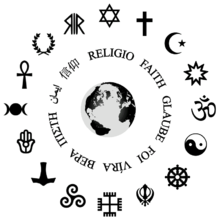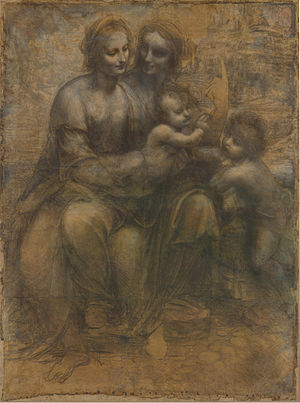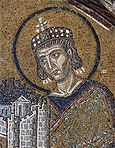
Portal:Religion
|
edit
The Religion Portal
Religion is the adherence to codified beliefs and rituals that generally involve a faith in a spiritual nature and a study of inherited ancestral traditions, knowledge and wisdom related to understanding human life. The term "religion" refers to both the personal practices related to faith as well as to the larger shared systems of belief.
In the larger sense, religion is a communal system for the coherence of belief—typically focused on a system of thought, unseen being, person, or object, that is considered to be supernatural, sacred, divine, or of the highest truth. Moral codes, practices, values, institutions, traditions, and rituals are often traditionally associated with the core belief, and these may have some overlap with concepts in secular philosophy. Religion can also be described as a way of life. The development of religion has taken many forms in various cultures. "Organized religion" generally refers to an organization of people supporting the exercise of some religion with a prescribed set of beliefs, often taking the form of a legal entity (see religion-supporting organization). Other religions believe in personal revelation and responsibility. "Religion" is sometimes used interchangeably with " faith" or " belief system," but is more socially defined than that of personal convictions.
edit
Selected article
Scientology is a body of teachings and related techniques developed by American science fiction author L. Ron Hubbard. It began in 1952 as a self-help philosophy, an outgrowth of his earlier self-help system, Dianetics, and later described itself as a new religion. It claims to offer "an exact methodology" to help humans achieve awareness of their spiritual existence across many lifetimes and, simultaneously, to become more effective in the physical world. The name "Scientology" is also used to refer to the often controversial Church of Scientology, the largest organization promoting the practice of Scientology, which is itself part of a network of affiliated corporations that claim ownership and sole authority to disseminate Dianetics and Scientology.
A stated goal of Scientology is to "rehabilitate" the thetan (roughly equivalent to the soul) to regain its native state of " total freedom." Church spokesmen and practitioners claim that Hubbard's teachings (called "Technology" or "Tech" in Scientology terminology) have saved them from a plethora of problems and enabled them to better realize their highest potential in business and in their personal lives. However, outside observers—including journalists, lawmakers, and national governing bodies of several countries—have alleged that the Church is an unscrupulous commercial enterprise that harasses its critics and brutally exploits its members. edit
Selected pictureThe Virgin and Child with St Anne and St John the Baptist, sometimes called The Burlington House Cartoon, is a full-size cartoon by Leonardo da Vinci. edit
Selected religious figure
Constantine I commonly known as Constantine the Great, or (among Eastern Christians of Byzantine tradition) Saint Constantine, was a Roman Emperor.
Constantine is best remembered in modern times for the Edict of Milan in 313, which bestowed imperial favour on Christianity in the Empire, for the first time. Constantine is also remembered for the Council of Nicaea in 325; these actions are considered major factors in the spreading of the Christian religion. His reputation as the "first Christian Emperor" has been promulgated by historians from Lactantius and Eusebius of Caesarea to the present day, although there has been debate over the veracity of his faith. This debate stems from his continued support for pagan deities and the fact that he was baptized very close to his death. edit
Did you know...
edit
Selected quote edit
Selected scripture
Akilattirattu Ammanai அகிலத்திரட்டு அம்மானை (Tamil: akilam (world) + thirattu (collection) + ammanai (ballad)), also called Thiru Edu (venerable book), is the main religious book of the Southern Indian religion Ayyavazhi, officially considered as an offshoot of Hinduism. The title is often abbreviated to Akilam.
According to the book, Akilam, Hari Gopalan Citar wrote this book on the twenty-seventh day of the Tamil month of Karthikai (November/December) in the year 1841 CE. The author claims that God woke him up during his sleep and commissioned him to take dictation from what he said. Akilathirattu was recorded on palm leaves until 1939, when it was given printed form. Akilam is in two parts; the first is an account of the ages preceding that of the present age, the Kali Yukam, and the second is an account of the activities of Ayya Vaikundar leading up to his attaining Vaikundam. Akilathirattu is written as a poem in the Tamil language. The narration alternates between two sub-genres called viruttam and natai. Both sub-genres employ many poetic devices like alliteration and hyperbatons. It contains more than 15000 lines making up seventeen section.
|






